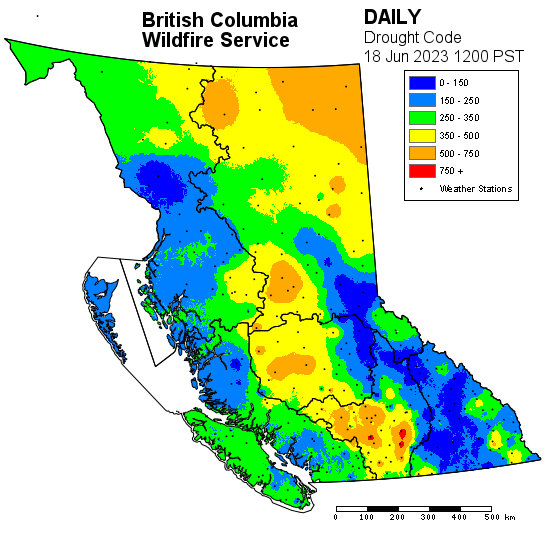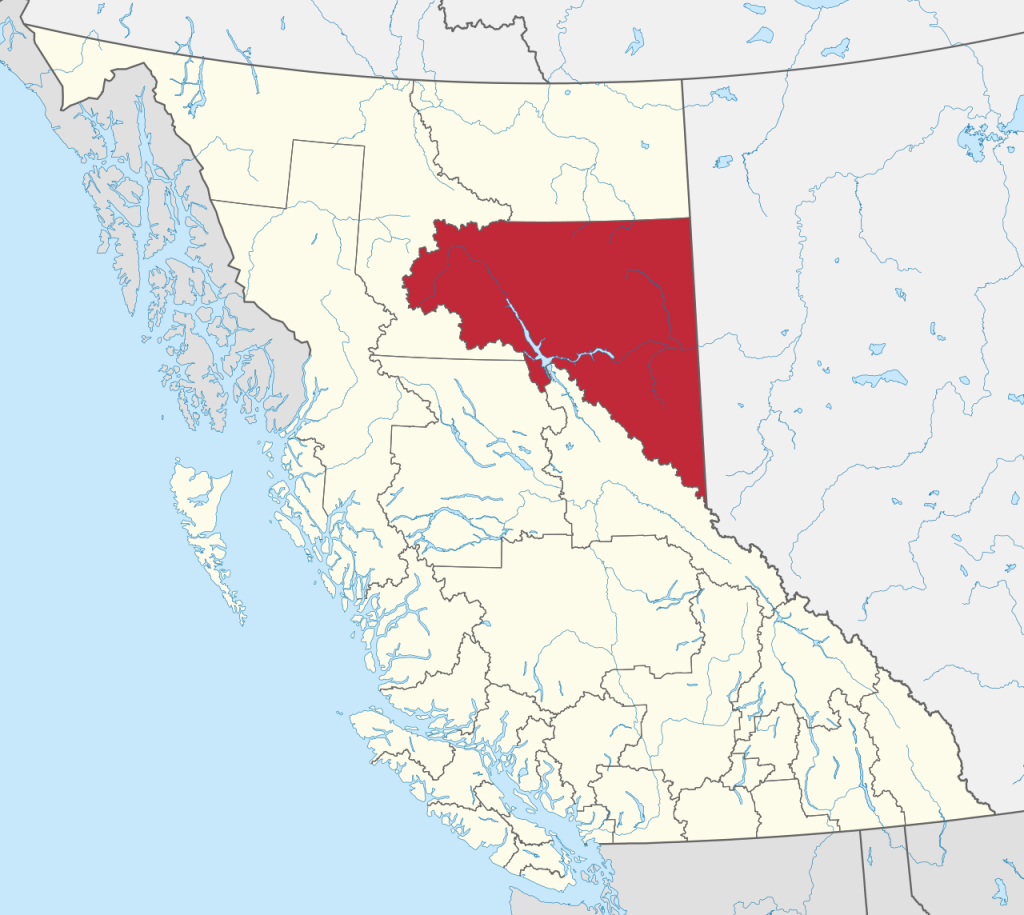Since April 1, 2023, 457 wildfires have burned 869,861 hectares in British Columbia. The 20-year average for this time of year is 16,218 hectares.
Across Canada, 5,792,184 hectares have burned since Apr 1. The national 10-year average for this time of year is 369,266 hectares.
The amount of hectares burned this season is significant, drawing comparisons to previous, devastating wildfire seasons. However, there are key factors that have caused more hectares to burn this season as well as other things to consider when comparing severe seasons.
Highest seasonal hectares burned in B.C. since 1950:
| Fire Year | Hectares Burned |
| 2018 | 1,354,284 |
| 2017 | 1,216,053 |
| 2021 | 869,300 |
| 1958 | 855,968 |
| 1961 | 483,097 |
| 2014 | 368,786 |
| 1971 | 351,342 |
| 1982 | 348,695 |
| 1950 | 343,339 |
| 2010 | 337,149 |
| 1985 | 312,757 |
Donnie Creek wildfire

The Donnie Creek wildfire, burning in the northeasten corner of the province accounts for 534,388 of these hectares, or 62 per cent of the total area burned so far this season.
On June 18, 2023, the Donnie Creek wildfire became the largest recorded wildfire in British Columbia’s history, excluding past wildfire complexes.
It was detected on May 12, 2023, and was caused by lightning.
This fire has grown due to natural growth as well as combining with six smaller lightning-caused fires which is adding to its size.
- G80582 (Bubbles Creek)
- G80590 (Heck Creek)
- G80633 (Holman Creek)
- G80287 (West Conroy Creek)
- G80315 (Hockey Creek)
- G80274 (Katah Creek)
Conditions contributing to growth
The Donnie Creek wildfire is burning in highly volatile boreal spruce fuel types, in a sparsely populated region that has experienced prolonged drought conditions.

Boreal forests are fire-adapted ecosystems and this is a natural process. It is not uncommon for boreal forest types to experience fires of this size in the spring, and they are especially fire-prone during the prolonged drought conditions we are currently experiencing, which contribute to advanced fuel drying.
Throughout May, temperatures were consistently above seasonal averages, with daily temperatures ranging three to 10 degrees higher than normal. The amount of rain received was also considerably lower than historical norms, with some areas receiving half of their average amount of precipitation. Sixteen of 23 Environment Canada weather stations recorded the warmest May on record. Nineteen of 23 Environment Canada weather stations recorded a drier than normal May.

Managing large wildfires
When wildfires become this large, wildfire response shifts to a management approach.
Managing a fire of this size means a focus on suppression activities around communities and critical infrastructure and monitoring the fire where these values are not at risk.
We expect the Donnie Creek wildfire will continue to burn into the fall, with possible extinguishment in the winter. Even with snow and winter rains, there is potential for fires to overwinter and continue to smoulder through the winter months, and emerge the following spring. This usually occurs when there is a thick layer of duff, which is made up of decaying needles, leaves and woody debris. These fuels allow for very slow, smouldering conditions that can linger through winter, re-emerging in the spring.
Is 2023 the worst season on record?
While many hectares have burned so far this year, area burned is just one tool to measure the impact of a wildfire or wildfire season.
There are other important factors to consider when comparing seasons such as impacts to structures, lives, cultural values, ecological values, property and infrastructure, local economies, tourism and industry.
While wildfires are significant and challenging events to anyone impacted, as of June 19, approximately 10 properties are under an evacuation order because of the Donnie Creek wildfire. While it is challenging to quantify the human toll of challenging wildfire seasons, it’s important to note that hectares burned does not tell the whole story.
What is the future of the season?
Typically, the number and severity of wildfires in July and August depends on the amount of rain received in June. Despite a temporary cooling trend, Environment Climate Change Canada is indicating a high probability of above-normal temperatures throughout the summer. It is unlikely the amount of rainfall forecast for the second half of June will be sufficient to alleviate the elevated drought conditions that have persisted since last fall.
Warmer-than-normal temperatures typically result in accelerated drying conditions and increase the risk of ignition from both lightning and humans in starting and sustaining wildland fires. Until significant and prolonged precipitation is observed, fuels will continue to dry, resulting in deep burning and challenging firefighting conditions. The number of new wildfire starts will increase as we move through June and into July and August, the two months that typically see the most lightning activity. Overall, an early and more active start to the core wildfire season is anticipated.
